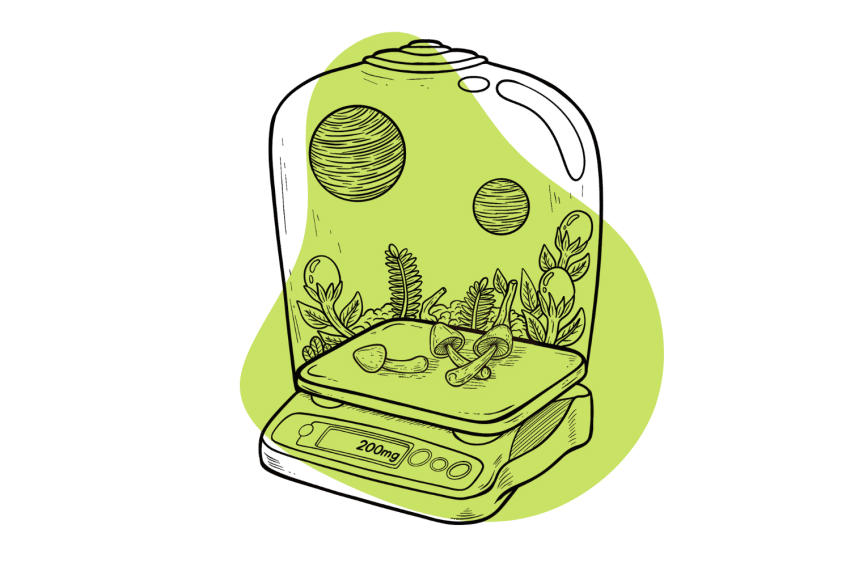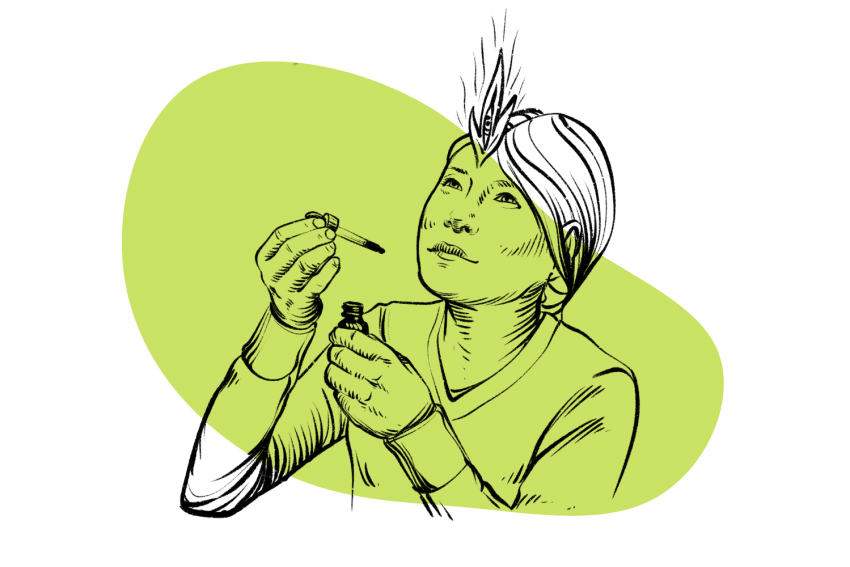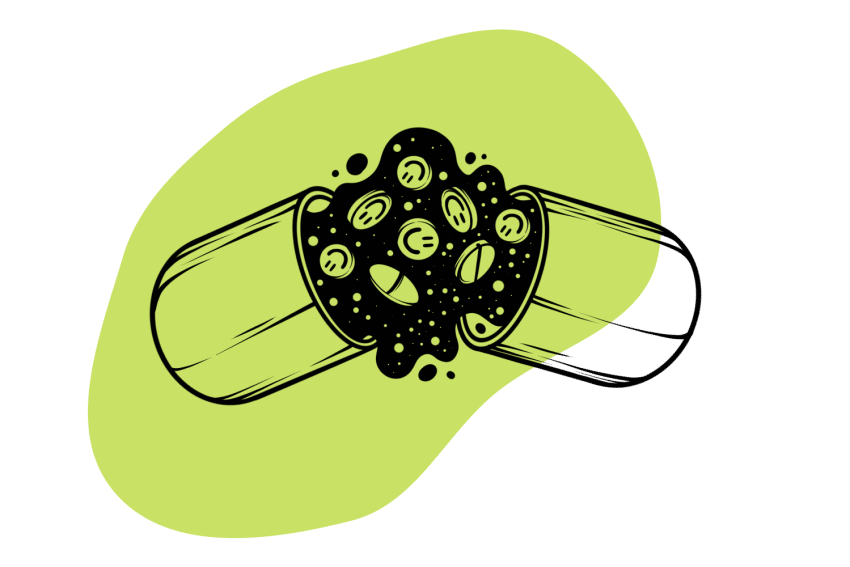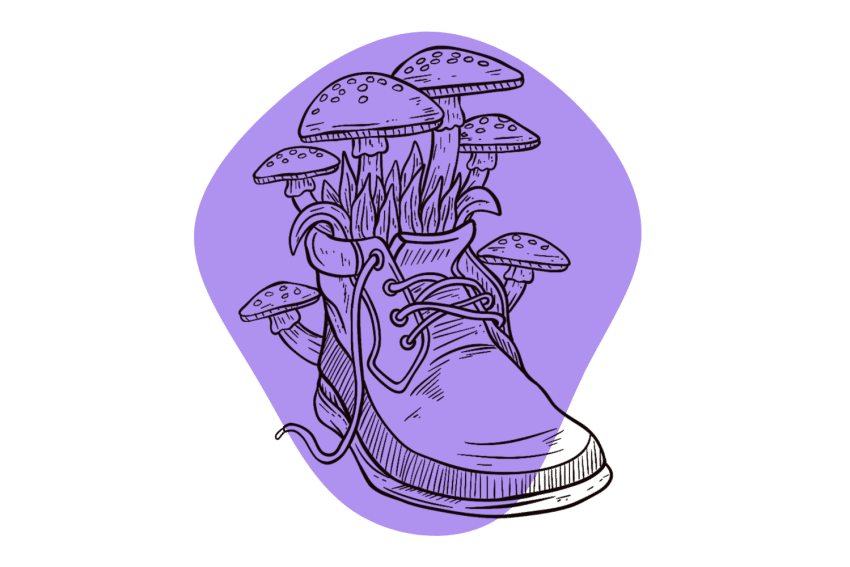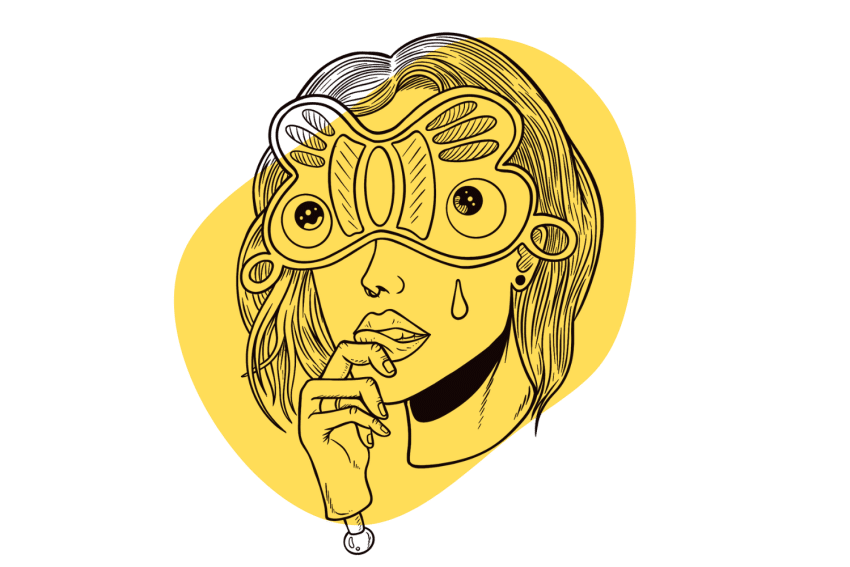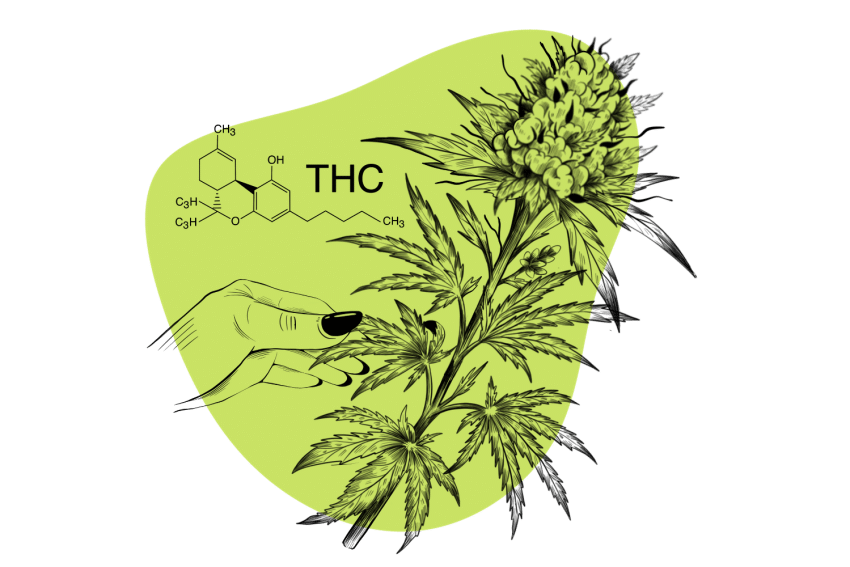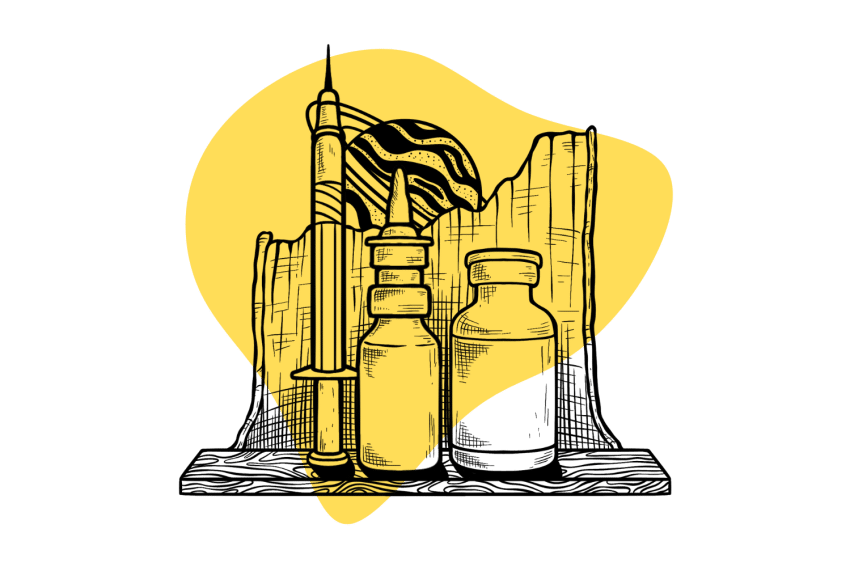A Psychedelic Slumber: The Science Behind Microdosing LSD for Sleep
Microdoses of LSD appear to increase the amount of time spent in REM sleep, the stage where most of our dreaming occurs.
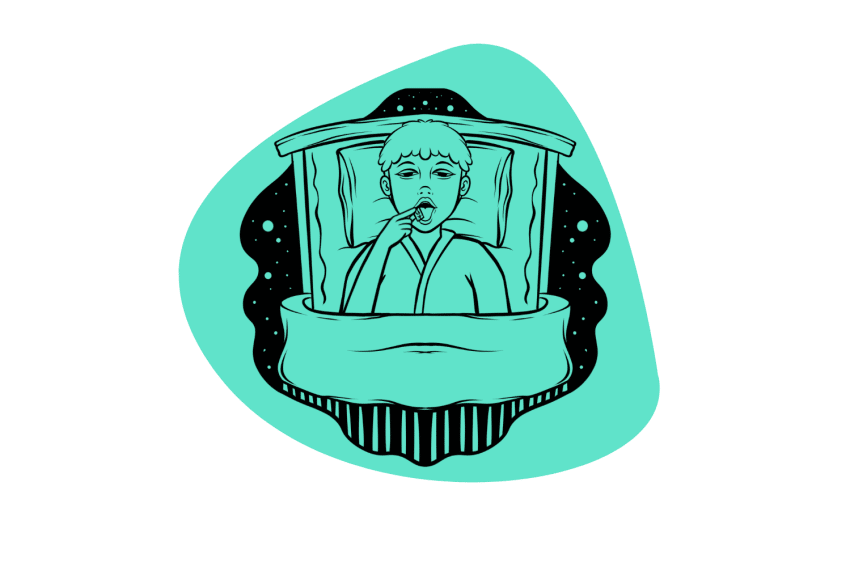
LSD (lysergic acid diethylamide) is one of the most potent psychedelics on Earth, it’s most commonly used recreationally, but research has also proven its potential as a therapeutic tool, even at low, sub-perceptive doses (called microdoses) [1].
In the last decade, researchers have conducted clinical trials to examine the effects of LSD on health conditions like addiction, PTSD (and other trauma-related illnesses), and cluster headaches [2, 3].
Psychiatrists & researchers have also studied the effects of LSD-assisted psychotherapy in cases of existential anxiety related to life-threatening diseases [4].
However, there’s one potentially beneficial aspect of taking LSD that has not been explored in great detail – its capacity to help encourage healthy sleep.
Summary of Microdosing for Sleep
- The standard LSD microdose ranges between 8–25 micrograms.
- Microdosing LSD can increase dreaming time by increasing the duration of REM sleep [5].
- Microdosing LSD won’t make you wake up feeling more restful.
- Microdosing doesn’t carry a significant risk of side effects.
What Is Microdosing?
Microdosing is the practice of taking sub-perceptual doses of a psychedelic substance, like LSD or psilocybin, to solely experience subtle changes in mood and perception without experiencing cognitive impairment.
Regarding LSD, a microdose can mean taking only 1/10 or 1/20 of a standard recreational dose (∼80 mcg).

The idea behind microdosing is that users hope to experience extremely mild physiological changes, benefit from the substance’s therapeutic effects, and still do their everyday activities.
Users regularly report heightened moods or a greater sense of calmness and clarity during the day.
How Does LSD Affect Your Sleep?
A few studies on the effects of LSD on sleep have shown that LSD may increase the duration of
The physiological process of sleep achieves many functions in the body, from helping to regrow damaged neurons to building bone tissue.
Microdosing LSD won’t improve your sleep quality or make you feel well-rested, but doses of 7–22 mcg of LSD have been shown to prolong the REM phase of the sleep cycle [5, 7].
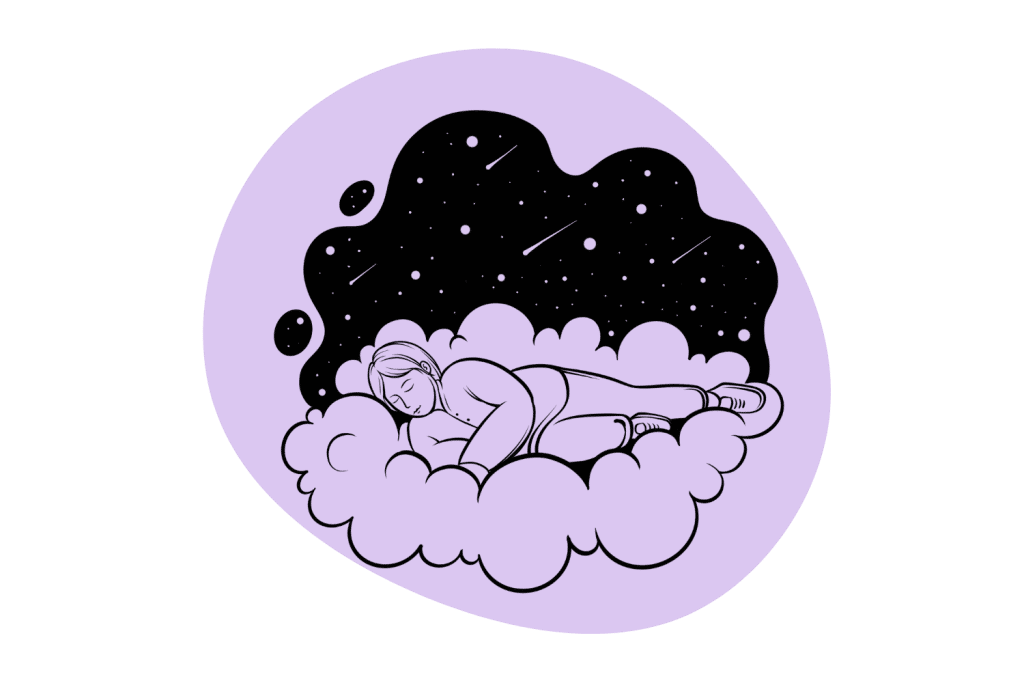
In theory, this could help you spend more time dreaming each night, improve your ability to memorize information, and improve your problem-solving capacities during the day.
Increasing REM sleep is useful for a few reasons:
- Lucid dreaming — people who practice lucid dreaming may have a greater chance of achieving lucidity with longer REM cycles.
- Dreams help us consolidate memories — they’re integral to the learning process and are especially helpful with memorization-type learning.
- Dreaming is essential for mental health — they help us maintain our mental schema.
There’s an entire category of substances called oneirogens that have the sole purpose of increasing the vividness or duration of dreams. We consider microdoses of LSD an oneirogen.
Related: Why You Can’t Remember Your Dreams
Large Doses of LSD May Reduce Sleep Quality
Anybody who’s taken psychedelic doses of LSD will tell you LSD does not help you sleep. In fact, one of the side effects of LSD is difficulty sleeping — this can persist several hours after the LSD has worn off.
It’s important to note that when talking about the potential benefits of LSD on sleep, we’re specifically talking about microdoses. And even then, there’s no evidence LSD actually improves the quality of sleep itself — just the time spent in REM.
The Stages of Sleep
The sleep cycle is divided into four main stages (or phases), each with different characteristics, such as changes in muscle tone, brain wave patterns, and eye movements [6].
- Stage 1 Light Sleep (Non-REM)
- Stage 2 Light Sleep (Non-REM)
- Stage 3 Deep Sleep (Non-REM)
- Stage 4 REM Sleep
Some scientists include two additional stages to account for some of the transitory stages between REM sleep and deep sleep.
In the 90 minutes after you fall asleep, your body slowly drifts from light sleep (Stages 1-2) into a deeper sleep (Stages 3-4). Eventually, it enters into a REM cycle, meaning “rapid eye movement.”
During REM sleep, you’re dreaming, your eyes flutter quickly, and your brain does most of its mental and intense work. At the same time, you are asleep, processing memories, allocating resources, and assigning the day’s events into long-term memory.
Each of the REM cycles gets longer throughout the night, starting around 10 minutes long and eventually becoming longer than an hour.
If you have been awoken suddenly and felt groggy and almost delirious, you were probably right in the middle of REM sleep.
So, when considering how microdosing could affect our sleep, the key is understanding how microdosing LSD can affect our REM sleep.
Why Is There Such A Lack Of Studies for LSD & Sleep?
Despite the therapeutic potential of LSD for anxiety, addiction, and migraines, there is still a lack of studies into the benefits of LSD in general, let alone its effects on sleep.
In fact, one of the most significant and impactful studies on LSD was made decades ago, in 1978, and it wasn’t even about humans; it was all conducted using cats [8].
Interestingly, the study found that, when given LSD, cats experience nearly the opposite effects. Instead of experiencing reduced wakefulness and longer REM cycles, cats are more wakeful and have reduced REM cycles, though note that this study was completed almost 50 years ago.
Unfortunately, researchers are only beginning to explore the benefits of LSD on sleeping patterns, but we expect to see a lot more studies in the not-too-distant future.
Related: Making Sense of Psychedelic Research
How To Get Started With Microdosing LSD
Microdosing LSD, or any psychedelic in general, is easy because it requires you to take much smaller doses than typical.
What constitutes a microdose differs from person to person, but a good estimation is to take between 1/10th and 1/20th of a standard dose (8–12 micrograms).
This means that, for LSD, you will most likely have it readily available on a blotter paper. It’s always advisable to measure your microdoses beforehand — you can cut the tabs into ten squares to be more accurate, but nine is close enough and is much easier to divide evenly.
Also see: Can You Microdose With LSD Gel Tabs?
What Is LSD?
LSD is a classical — and possibly the most well-known — psychedelic. It was discovered by Swiss chemist Albert Hofmann, who developed it almost accidentally by combining diethylamine, an alkaline, with lysergic acid.
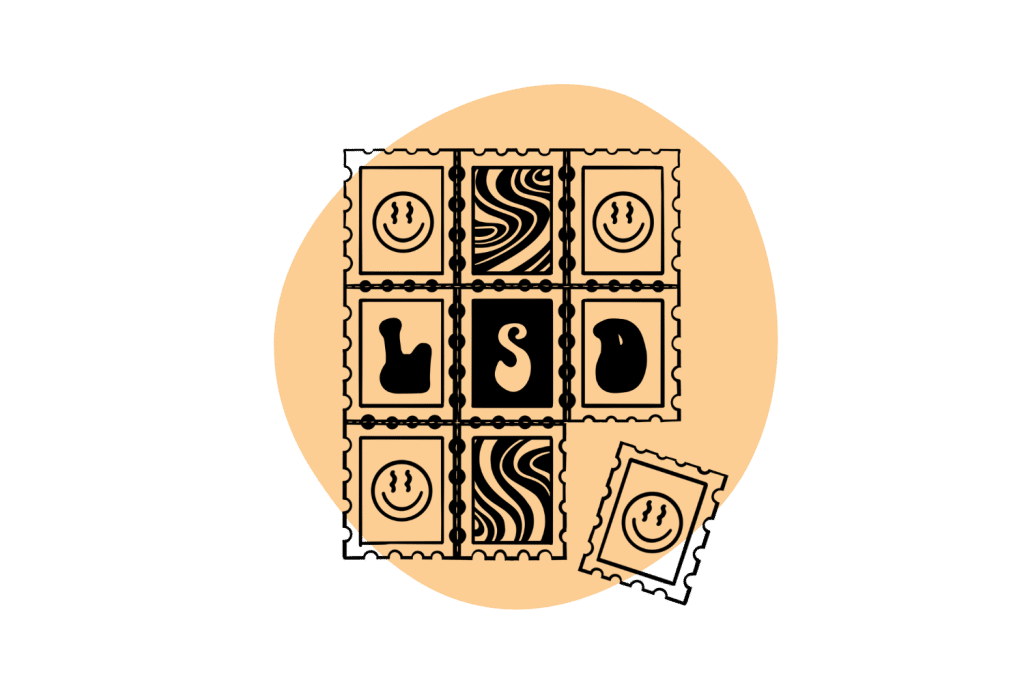
Developed decades ago, Hofmann found LSD produced all kinds of effects, including elevated mood and intense hallucinations.
After a brief stint as a tool by various governments as a truth serum, LSD is now showing promise for treating many conditions, including PTSD, depression, and pain [9].
Usually taken under the tongue, LSD can induce significant psychedelic effects lasting up to 12 hours.
What Does LSD Feel Like?
LSD is well known as a hallucinogen, producing visual and sometimes auditory stimuli while you are under its influence.
The psychedelic experience can vary dramatically depending on the specific dose taken and each individual’s biology. The effects of LSD could include things like seeing, hearing, feeling, or even smelling things that are not necessarily there.
Alongside this, there might be a distorted sense of the passing of time, as well as surges in emotions and altered states of thinking.
Truthfully, LSD’s effects can be very different from person to person, and you should expect its effects to last between 4-12 hours.
But what about its safety? Is it physically safe to be taking LSD, especially when taken in microdoses?
Conclusion: Is LSD Good for Sleep?
The safety of all psychedelics, including LSD, is based mainly on the risks the user takes.
LSD is typically very safe, and according to Gasser et al., this substance has little propensity to develop long-lasting side effects [10].
While there are instances of heightened anxiety, paranoia, and even an elevated sense of intense fear, most of the time, the only significant side effect of LSD is its potential to cause a bad trip.
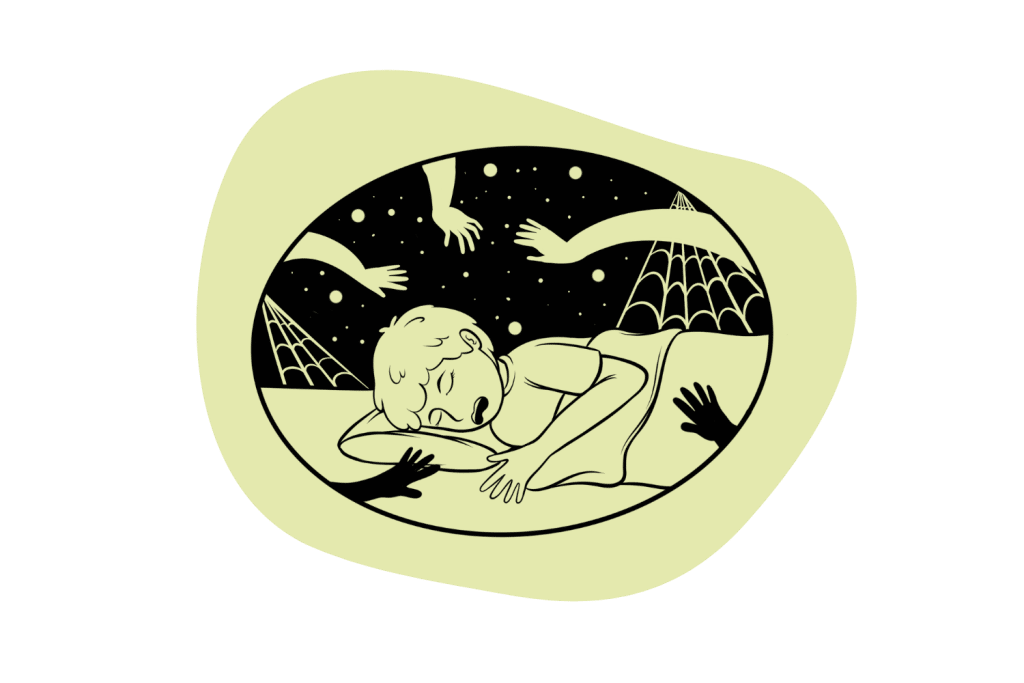
A bad trip is an incredibly unpleasant psychedelic experience, usually accompanied by overwhelmingly negative or hostile hallucinations.
However, with microdosing, you are taking a very small quantity of the substance, making it nearly impossible to cause a bad trip whatsoever.
The only risk of microdosing is accidentally taking far more LSD than you intended.
Overall, microdosing LSD is pretty safe, so long as you are always cautious about how much you take at any time.
References
- Fadiman, J., & Korb, S. (2019). Might microdosing psychedelics be safe and beneficial? An initial exploration. Journal of psychoactive drugs, 51(2), 118-122.
- Sewell, R. A., Halpern, J. H., & Pope, H. G. (2006). Response of cluster headache to psilocybin and LSD. Neurology, 66(12), 1920-1922.
- Krebs, T. S., & Johansen, P. Ø. (2012). Lysergic acid diethylamide (LSD) for alcoholism: meta-analysis of randomized controlled trials. Journal of Psychopharmacology, 26(7), 994-1002.
- Gasser, P., Kirchner, K., & Passie, T. (2015). LSD-assisted psychotherapy for anxiety associated with a life-threatening disease: a qualitative study of acute and sustained subjective effects. Journal of Psychopharmacology, 29(1), 57-68.
- Muzio, J. N., Roffwarg, H. P., & Kaufman, E. (1966). Alterations in the nocturnal sleep cycle resulting from LSD. Electroencephalography and clinical neurophysiology, 21(4), 313-324.
- Patel, A. K., Reddy, V., & Araujo, J. F. (2022). Physiology, sleep stages. In StatPearls [Internet]. StatPearls Publishing.
- Passie, T., Halpern, J. H., Stichtenoth, D. O., Emrich, H. M., & Hintzen, A. (2008). The pharmacology of lysergic acid diethylamide: a review. CNS neuroscience & therapeutics, 14(4), 295-314. https://www.ncbi.nlm.nih.gov/pmc/articles/PMC6494066/
- Kay, D. C., & Martin, W. R. (1978). LSD and tryptamine effects on sleep/wakefulness and electrocorticogram patterns in intact cats. Psychopharmacology, 58(3), 223-228. https://pubmed.ncbi.nlm.nih.gov/210478/
- Ramaekers, J. G., Hutten, N., Mason, N. L., Dolder, P., Theunissen, E. L., Holze, F., … & Kuypers, K. P. (2021). A low dose of lysergic acid diethylamide decreases pain perception in healthy volunteers. Journal of Psychopharmacology, 35(4), 398-405.
- Gasser, P., Holstein, D., Michel, Y., Doblin, R., Yazar-Klosinski, B., Passie, T., & Brenneisen, R. (2014). Safety and efficacy of lysergic acid diethylamide-assisted psychotherapy for anxiety associated with life-threatening diseases. The Journal of nervous and mental disease, 202(7), 513.

